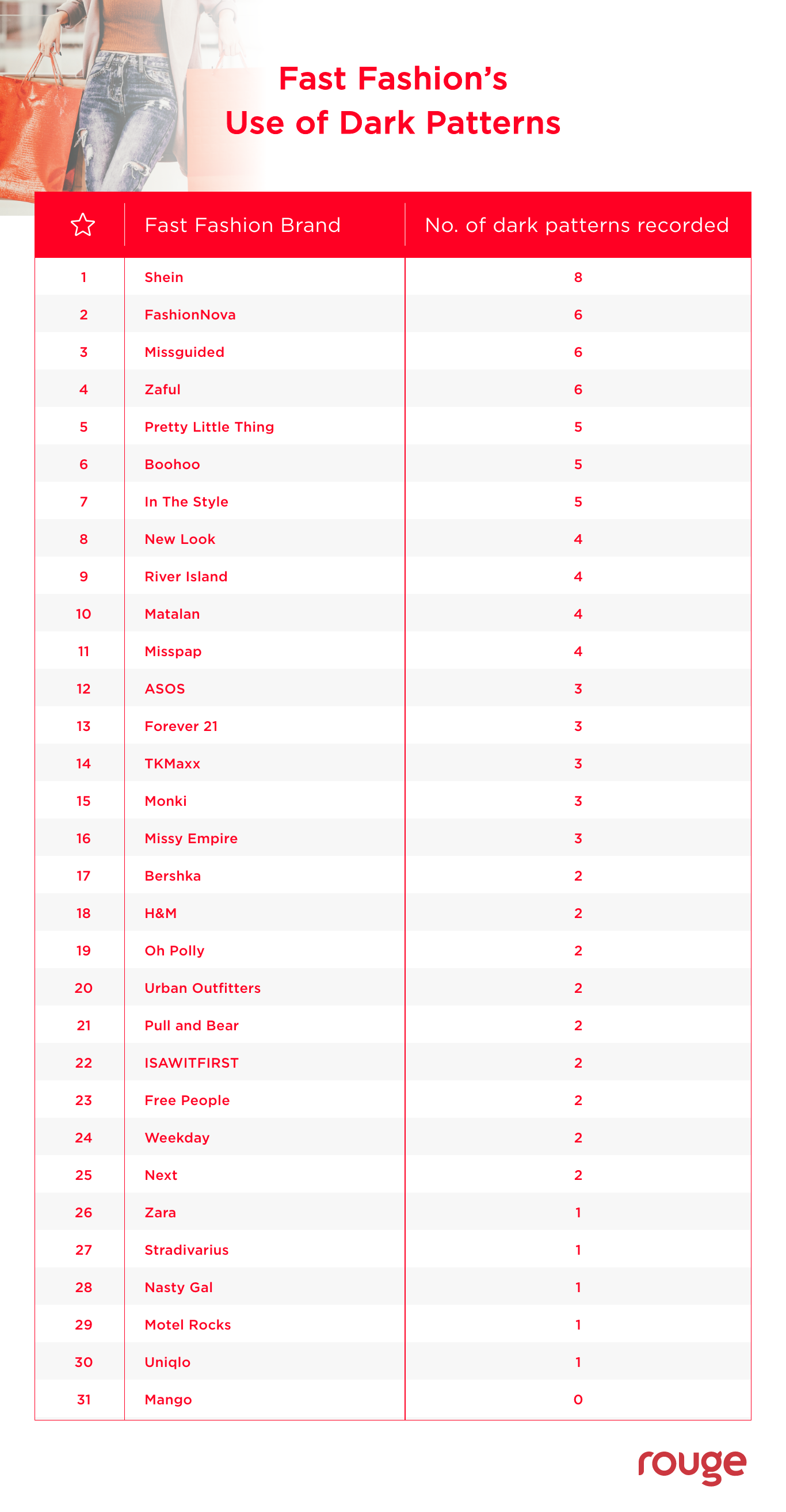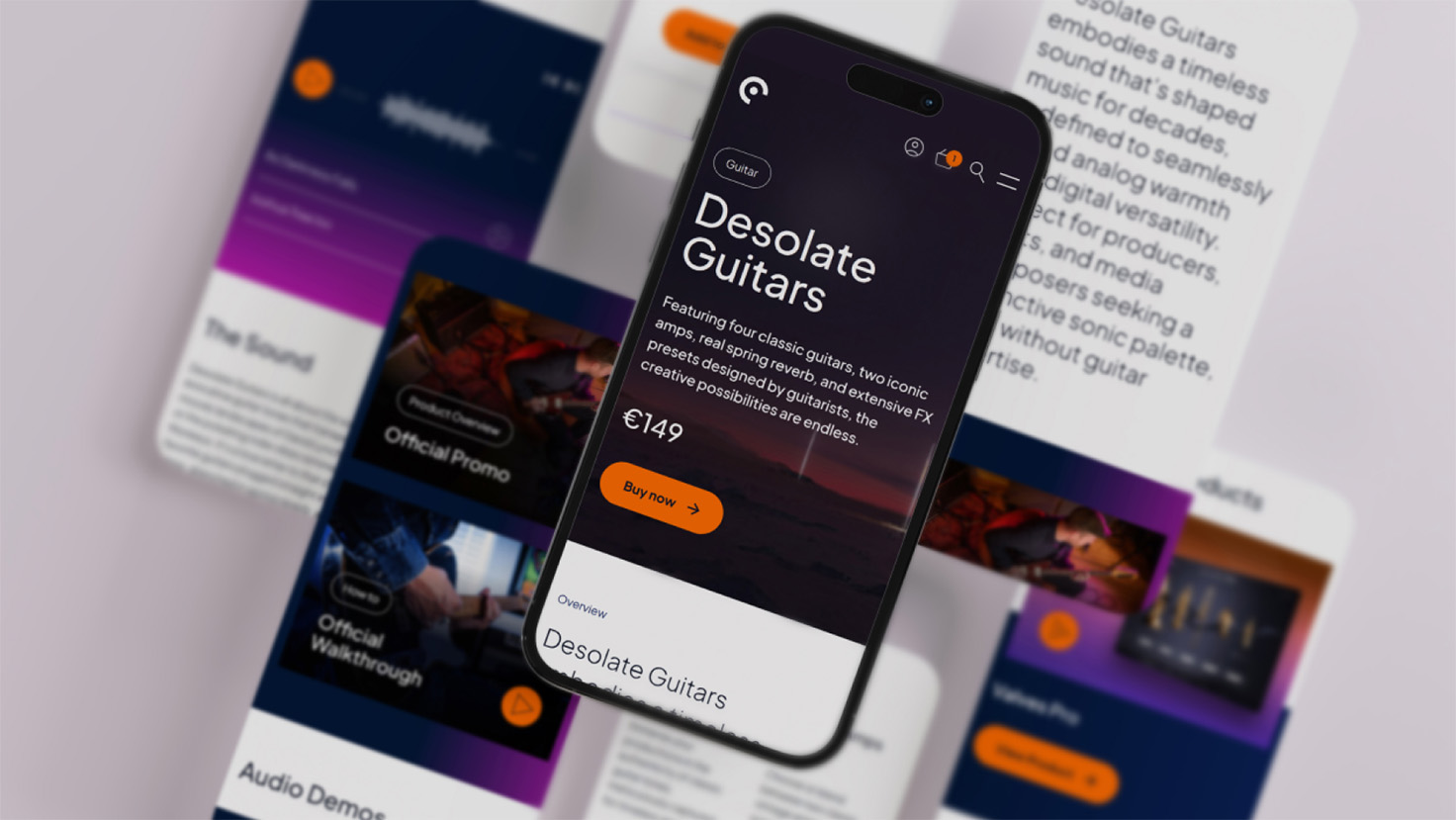Shein ranked most manipulative fast fashion brand in our dark patterns study

Dark patterns and fast fashion have become a force to be reckoned with. But one many consumers fail to even notice, despite them influencing their spending habits, bank balances and fuelling a new form of shopping addiction.
From feeling pressured by time-limited deals, going round in circles trying to cancel a subscription, and being tempted to add recommended products to your basket, online retailers have an arsenal of tactics to get people to spend more…and keep coming back.
What are dark patterns?
Essentially, dark patterns are design trickery. Much like a magician’s sleight of hand, online retailers will craft their site in a way that encourages you to behave how they want, often without you even realising.
There are many different types of dark pattern and they’re designed to benefit the company rather than make your experience as easy and pleasurable as possible.
It’s not enough just to get site visitors; most businesses need you to buy something, sign-up, follow them on social media, request more information or leave your details.
Five commonly used dark patterns
Confirmshaming: Retailers make you feel bad, guilty or like you’ll miss out if you say no to something
Hidden costs: When you’re forced to spend more money than you thought for a product or service, often added on at the last step when checking out
Forced continuity: Making it hard for you to cancel a subscription after a free trial has ended
Disguised ads: Adverts are disguised as prompts or editorial which trick you into clicking on them
Friend spam: Asking for your email or social media permissions to spam your friend network with marketing
An analysis of fast fashion’s use of dark patterns
We analysed the websites of over 30 of the biggest fast fashion retailers in the UK and scored each for how many dark patterns shoppers experience before completing a purchase.

Chinese fast-fashion giant Shein is crowned the most manipulative online retailer, with at least eight instances of dark patterns being used as shoppers navigate through the home page, to new arrivals, to their basket and check out.
Techniques include time-limited discounts with countdowns, extra money-off for app sign-ups, delivery options ordered by most expensive first, suggesting other items you might like, and prompts to spend more to get a free gift or delivery.
Shein, despite being a mysterious and controversial brand, recently became the world’s largest online-only fashion company. What’s more, a recent study also found Shein is at the forefront of TikTok fashion culture, with #sheinhaul being viewed over 3.4 billion times and counting.
It’s clear Shein is hard to resist. And its excessive use of dark patterns may be why.
Missguided, FashionNova and Zaful are also avid users of dark patterns according to the study, with shoppers facing at least six different prompts to spend more money or give over personal data in exchange for discounts or a personalised experience.
“Hurry before it’s gone”, “£66.75 from free shipping! Keep shopping” and “Good choice…someone bought this at 12:31pm” are examples of the kind of messages analysts encountered before checking out.
Other fast fashion outlets that were pulled out by the analysts as using excessive dark patterns to influence their customers’ purchases were Boohoo and Boohoo-owned brands Pretty Little Thing and Misspap.
In contrast, two Spanish fashion retailers – Mango and Zara – were found to use the least dark patterns among the brands studied. The shopping experience on both sites is simple and spacious, with no time-pressure or scarcity techniques used to make you buy faster and spend more.
Perhaps both brands’ history of being bricks and mortar stores have influenced the design of their customers’ digital experience.
The rise in popularity of online fast fashion has been triggered by the pandemic, social media becoming a new shopping channel and the decline of the high street. As a term, it was first coined in the early 2000s to describe the quick turnover of designs from catwalk to stores, shortening the timeframe and turnover of fashion. And it’s expected to have long lasting effects.
Methodology
Each fast fashion retailer’s website was visited on 14/09/21 and scored one point for every type of dark pattern experienced from landing on the homepage to adding a new arrivals item to the basket, and reaching the final step for completing a purchase.




